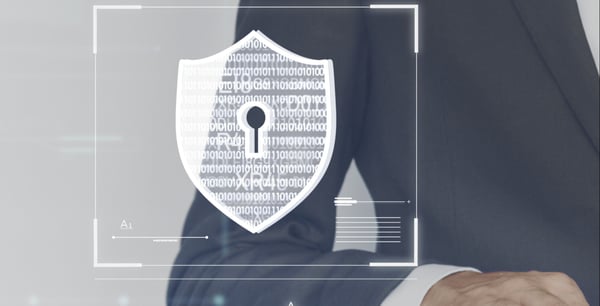
Critical IT Strategies for Home Healthcare Organizations
Enhancing Field Support, Cybersecurity, and Application Performance
For example:
- Home healthcare providers rely heavily on mobile devices, such as tablets and smartphones, to access electronic health records (EHRs), document patient visits, and communicate with care team members. Yet, connectivity issues and systemic IT problems can hinder mobile device use or encourage staff to create risky workarounds.
- Home healthcare providers handle sensitive patient health information in patients' homes, making the organization vulnerable to data breaches and privacy violations. Yet, cybersecurity best practices are often overlooked and compliance violations are prevalent.
- Home healthcare providers use sophisticated, often proprietary, applications, to collaborate with multiple healthcare organizations, including hospitals, primary care providers, and specialists. Yet, poor application support often negatively impacts important work and affects care coordination.

These struggles are likely not new for you. Home healthcare organizations usually acknowledge that supporting a decentralized team of people out in the field, with multiple locations and budget constraints, is difficult. Yet, it’s often the norm.
This guide outlines the risks of settling for the status quo and prioritizes key activities you can implement cost-effectively—acknowledging that you will have budget and staff limitations.
What's Inside this Critical IT Strategies Guide?
Short on Time? Download the PDF ⬇️
Consider the risks of settling for the status quo
Typically, home healthcare organizations have limited IT staff who spend too much time putting out fires. Home healthcare IT directors and managers often acknowledge the risks of understaffing—an inability to effectively support field staff, an increased chance of a cyberattack or HIPAA violation, and application support overwhelm.
Digging a bit deeper, it’s clear that these issues can profoundly impact home healthcare organizations if left to linger.
Compromised Patient Care
Home healthcare providers may face difficulties accessing patient records and care plans promptly, leading to delays in treatment and care delivery. A lack of integrated IT systems can hinder effective communication and coordination, affecting the quality of care provided to patients.
Operational Inefficiencies
Home healthcare organizations may experience frequent system outages and downtime, disrupting daily operations and reducing productivity. Inefficient IT systems can cause delays in scheduling patient visits and responding to patient needs, negatively impacting service delivery.
Challenges in Scaling Services
Home healthcare organizations may face challenges in scaling their services to meet growing patient demands and expanding with new sites. As the organization grows, integrating new technologies and systems becomes difficult, leading to fragmented operations.
Reduced Staff Productivity and Morale
Frequent IT issues and lack of reliable support can frustrate healthcare staff, leading to decreased morale and increased turnover rates.
Security and Data Privacy Risks
A lack of cybersecurity best practices makes home healthcare organizations more vulnerable to cyberattacks and data breaches, risking the compromise of sensitive patient information. Security incidents and data breaches can damage the organization's reputation, eroding trust among patients and stakeholders.
Financial Consequences
Reactive IT support often results in higher costs due to emergency fixes and unplanned downtime. System outages and inefficiencies can lead to missed appointments and billing errors, resulting in lost revenue for the organization. Compliance violations can also involve financial penalties.

To avoid letting these risks get out of hand, despite budget and staff challenges, you need to focus on three areas.
- Optimize your IT systems management and get help managing routine day-to-day IT activities.
- Ensure your organization is cybersecure.
- Enhance support for your unique applications.
🔎 Related: What Do Managed IT Services Providers Do?
Leverage managed IT services.
Partner with a managed IT services provider (MSP) to handle routine IT tasks, maintenance, and support. This can be more cost-effective than maintaining an in-house IT team when you consider the costs and difficulty of hiring, retention, salaries, and benefits. An MSP can also maintain continuity of service in case of staff turnover, scale up and down depending on your organizational growth, and easily support your remote workforce.
Utilize cloud solutions.
Adopt cloud-based applications and services as much as possible to reduce the need for on-premises hardware and its associated maintenance costs. And by enabling remote access to critical applications and data, staff can work efficiently from any location.

📖 Related: 7 Benefits of a Technology Partnership
Ensure you have a 24/7/365 helpdesk.
Your MSP should provide a 24/7/365 helpdesk to ensure that simple issues are resolved quickly while more complex problems are escalated to experienced IT professionals. Because you have so many people in the field, it’s essential to leverage a helpdesk that offers remote support that makes the employees’ experience user-friendly and easy.
Conduct regular IT assessments.
Periodically assess the current state of your IT infrastructure and identify areas for improvement. Then, prioritize IT spending and focus on the most critical areas that will provide the highest return on investment. You should make it a habit of adapting your cybersecurity and technology policies, tools, and solutions to keep your data protected and operations running smoothly.
Optimize existing resources.
Ensure that existing IT resources are used efficiently. Consolidate underutilized servers and storage to optimize performance and reduce costs. You can also regularly review software licenses and subscriptions to eliminate unused or redundant services.
By implementing these strategies, home healthcare organizations can improve their IT support, enhance operational efficiency, and better serve their patients, even with limited budgets and staff.
Implement basic cybersecurity measures.
Ensure that all systems are protected by robust firewalls, deploy endpoint detection and response (EDR), patch software promptly, and require multi-factor authentication (MFA) for accessing sensitive systems and data to add an extra layer of security.
Conduct security awareness training.
Provide regular cybersecurity training to staff to educate them about common threats such as phishing and social engineering while teaching employees best practices for creating strong passwords, recognizing suspicious emails, and securely handling patient data. Security awareness training can easily be done online, at the employee’s pace, with monthly reporting to show progress.
Conduct regular security audits and assessments.
These will help you identify and address vulnerabilities in your IT infrastructure and ensure that you comply with relevant regulations such as HIPAA, which mandates strict data protection standards.
Consider outsourcing to a Managed Security Service Provider (MSSP).
An MSP will provide you with some cybersecurity basics, but an MSP that doubles as an MSSP is a great investment when considering patient safety and regulations. An MSSP will offer you specialized cybersecurity expertise and resources without the cost of maintaining an in-house team. They will provide services such as 24/7 continuous monitoring and threat detection services to quickly identify and respond to security incidents. In addition, they can also make sure you are compliant through a combination of the right strategies and tools, overseen by a virtual Chief Information Security Officer (vCISO) who specializes in your industry (and for a fraction of the cost to hire a full-time security director or executive).
🔎 Related: Managed Services Provider (MSP) vs Managed Security Services Provider (MSSP): What’s the Difference?
Develop and enforce security policies.
Establish and enforce comprehensive security policies covering data access, use of personal devices, and incident response. Regularly review and update security policies to adapt to new threats and changes in the regulatory environment.
Implement data encryption.
Encrypt sensitive patient data both when it is at rest (stored) and during transmission to protect against unauthorized access. This includes the use of secure messaging platforms for communication among staff to prevent data leakage.
Reevaluate your current data backup and disaster recovery plan.
For a home healthcare organization, downtime is unacceptable. Even with robust cybersecurity measures in place, you need a plan if the worst should happen. Schedule regular automated backups of critical data to ensure that information can be restored in the event of a cyberattack. As part of your plan, store backups offsite or in the cloud to protect against physical disasters and ensure data availability.
By implementing these strategies, home healthcare organizations can significantly enhance their cybersecurity posture, even with limited budgets and staff.
📖 Related: An IT Disaster Recovery Blueprint for Healthcare Organizations

Monitor network performance.
It’s important to make sure that no issues exist that could impact application performance and your staff accessing important data. Network monitoring involves continuously observing your network infrastructure to detect and diagnose issues or anomalies that could impact its performance or security. This includes monitoring network devices (such as routers, switches, firewalls), servers, applications, and traffic patterns. Monitoring tools collect data on network performance metrics, such as bandwidth utilization, packet loss, latency, and error rates, and generate alerts or notifications when thresholds are exceeded or abnormalities occur.
Automate routine tasks.
Implement automation tools to handle routine tasks such as data entry, reporting, and system monitoring, freeing up staff to focus on more complex issues. You should automate maintenance tasks such as backups, updates, and security scans to ensure consistency and reliability.

Utilize cloud-based applications.
Adopt cloud-based applications that offer subscription-based pricing, reducing the need for significant upfront investment in hardware and software. Cloud vendors also provide automatic updates and patches, ensuring that applications are always up-to-date and reducing the need for in-house maintenance.
Standardize and simplify your application portfolio.
Review and streamline your application portfolio to eliminate redundant or underutilized applications. Focus on a core set of applications that meet your organization's needs effectively. Choose applications that are interoperable and can integrate seamlessly with existing systems to reduce complexity and improve efficiency. Make sure you’re focusing resources on supporting and maintaining critical applications that directly impact patient care and operational efficiency.
Outsource application support.
Some MSPs that specialize in healthcare IT can provide application support and maintenance within a certain scope. While they may not be able to address all aspects of your application support, especially if it’s highly specialized or proprietary software, they can definitely tackle routine issues, coordinate with your staff on fixes, and manage support contracts with software vendors to ensure timely updates, troubleshooting, and technical assistance.
By adopting these strategies, home healthcare organizations can improve their application support capabilities despite budget constraints and limited staff.
1. Many best practices can be implemented at little to no cost.
Tight budgets or understaffing should never be an excuse for the lack of implementing critical best practices.
As we’ve seen, it takes little to no money to implement EDR, software patching, MFA, security awareness training, encryption, security policies, task automation, and an application portfolio review.
Without spending a great deal of money, you can tackle many items on our list.
2. You can prioritize and optimize what you have.
It’s common that organizations invest in a lot of technologies and tools, but they often don’t maximize those investments. Without spending another dollar, there is much you can do with your existing investments. Are you maximizing the use of your servers? How is your data storage? When is the last time you reviewed your software licenses and subscriptions? Is your disaster recovery plan efficient and working correctly?
Performing an audit or assessment of your IT, cybersecurity, or applications is a great way to start.
3. Don’t be afraid to ask for proactive, ongoing, outsourced help.
Outsourcing IT is quite powerful, especially considering the pain of not doing so—staying understaffed and overwhelmed, spending excessive energy on a hire only to have that person leave in a competitive job market, or dealing with the frustrations of a break-fix vendor that never fully resolves issues.
An MSP can become your backbone—at a fraction of the cost of a hire.
They can help you with:
- Basic IT monitoring, maintenance, and support functions that drown home healthcare IT staff in minutia every day.
- Improving your cybersecurity posture by implementing best practices, acting upon any critical alerts, and ensuring compliance.
- Enhancing your application support by taking over routine tasks, coordinating with the vendor, and co-managing your day-to-day needs.
VC3 can help your home healthcare organization with:
- Managed Services: Get 24/7 support, improve reliability and connectivity, and keep IT costs predictable.
- Managed Security Services: Secure sensitive information while complying with HIPAA or PIPEDA.
- Technology Enablement: Tackle projects that help you integrate specialized IT solutions with care services.

Have additional questions? Ready to take the next step to address your ongoing home healthcare issues and challenges? Contact us to talk with an IT specialist!
